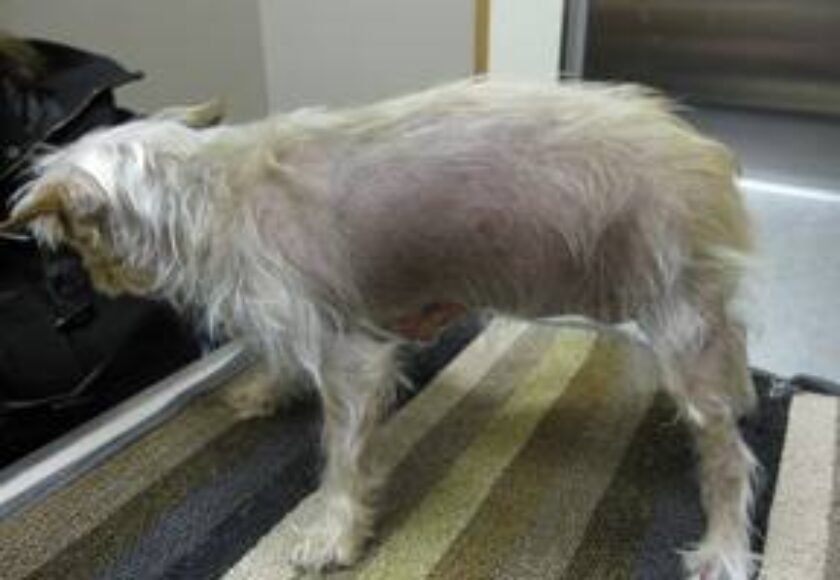The Nest Box
Keep the babies together as long as they are about the same age; this will help socialize them to their own species and will help in keeping them warm. Try to assemble the following equipment.
- The nest box in which the babies live should have tall sides so that they cannot climb out by mistake and become chilled. A cardboard pet carrier is perfect as it is portable, dark inside, and closable. These are inexpensive and should be available from a pet store or from your veterinarian.

- Place towels in the bottom of the box and cover them with a disposable diaper so the babies rest directly on the diaper. Most diapers have elastic leg holes and may have to be trimmed so they will lie flat. Expect to change the diaper several times daily. Keeping the babies clean and dry is very important, and a diaper is perfect for wicking away wetness.
- Place a heating pad under the nest box so that only half of the nest box is warmed. This way, the babies may crawl off the warm side of the box if they feel too hot. Alternatively, a water bottle filled with warm water can be buried in the blankets as a heat source as long as the babies have room to move away from it if they are too hot.
If the baby’s temperature drops below 94⁰F, the heart rate drops and intestinal motion ceases. Death occurs if this is not corrected.
Initial warming when babies have gotten cold should take place over an hour or two to avoid shock.
The Diet
- There are several brands of orphan formula on the market. For kittens, KMR® by PetAg and Just Born® by Farnam Pet Products come in both a powder and a liquid. The powdered form seems less associated with diarrhea than the liquid plus with the powdered form, the water content can be increased in the event of dehydration. For puppies, PetAg makes a canine formula called Esbilac® plus there is a canine version of Just Born formula. Again, both powder and liquid forms are available.
- Mix up the powder according to the directions on the can. If you are using the liquid form, you may want to dilute it with one part water for every two parts of formula. As the babies get older, less water may be used whether you are mixing up the powder or the liquid. If diarrhea occurs at any time, you should add more water to the formula to make up for fluid lost as diarrhea.
- Store the can of powder in the freezer after opening. Do not mix up more than a day’s worth of formula. Use a blender to mix the formula several hours ahead to allow time for the bubbles to settle.
Makeshift Formula Until Commercial Formula can be Obtained
Puppies
1 cup whole milk
1 tsp. salad oil
1 drop multi-vitamins (if you have any)
2 egg yolks
Kittens
1/2 cup whole milk
1 egg yolk
1 drop multi-vitamins
3 crushed Tums (antacid)
For either one, then mix in a blender.
The Bottle
- Obtain a pet nurser bottle from a pet store or your veterinarian.
- Use fine scissors or a hot needle to make a hole in the nipple. The hole should be big enough that formula will slowly drip out if the bottle is held upside-down and gently squeezed. The nipple should not collapse when the baby is sucking.
- Warm the bottle in a cup of hot water. Always test the formula before giving it to the babies. Taste it to be sure it is not sour. Do not use a microwave oven to heat the bottle as it may not heat evenly – some areas of the bottle can be scalding hot.
How / When To Feed
- Expect to feed them every two to three hours during the day. If this is done, the babies should be able to sleep through the night.
- Do not wake the babies at feeding time. Let them sleep. When they wake up hungry, they will let you know.
- During feeding be sure to tip the bottle so that no air is swallowed. It is more natural to feed them right side up rather than on their backs like human infants.
- Play with/rub them after feeding to burp them.
- Occasionally small amounts of formula will come out of the nose. The baby is drinking too fast. If excessive amounts of formula appear to be coming out the nose or if you are concerned, call your veterinarian.
Tube feeding involves using a syringe and lubricated tube to introduce formula through the mouth and directly into the stomach. Your veterinarian will need to show you how to do this should it become necessary. A baby who rejects three meals in a row will need tube feeding.
Urination / Defecation
- Infant animals are unable to take care of these matters alone and must be given help. Normally their mother’s tongue does the job as she washes them. Use a cotton swab, tissue, or your finger to gently rub the baby’s genital area. Have a tissue ready to catch the urine.
- Rubbing the anal area as well may also be necessary if the babies do not seem to be defecating as much as expected. Watch for diarrhea. Normal infant stool is loose but should not be watery.
- It is normal for baby kittens and puppies to have round bellies. If you think the baby might be constipated, usually taking the temperature rectally with a normal rectal thermometer provides enough extra stimulation to get things back to normal. Only the bulb of the thermometer tip needs to be inserted rectally.
Expect the baby to need stimulation for urination/defecation for the first three weeks of life.
Bathing
- Using kitten or puppy shampoo and warm water, bathe the babies a couple of times daily. Urine will burn their tender skin and caked feces can lead to infection, so keeping the babies clean is important.
- Take care not to submerge the infant in water. Be careful that it cannot drown or choke on the water and be sure the water temperature is acceptable.
- Gently blow dry the babies when the bath is over. Do not allow chilling.
How to be Sure You Are on Track
Starting Solid Food
The best way to be sure everything is going well is to track weight gain in your new babies. A postal scale or food scale (ideally one that measures weight in grams) will be helpful. A puppy or kitten should gain 10% of the birth weight every day and should be drinking 22 to 26 cc of formula per 100 grams of body weight over the course of the day. Puppies are variable in growth expectancy depending on breed, but kittens are more predictable and should gain 50 to 100 grams weekly. Kittens weighing less than 90 grams (approx three ounces) at birth have a high (59%) mortality rate.
- When the babies start biting and chewing at their bottle instead of sucking (three to four weeks of age), they may be started on some finely textured canned food. At first it may be necessary to mix solid food with a little formula and /or smear a little around their mouths gently with a finger. Prescription recovery diets have a very soft texture and are readily accepted but any pate style canned food should do well. Your vet’s office will most likely have a recovery formula diet available.
- Between ages four and six weeks, they should begin readily accepting solid food. New homes may be found for them at age eight weeks.
A Note on Colostrum
Colostrum is the first milk produced by the mother shortly after giving birth. It is rich in antibodies which will protect the babies for the first several months of life. Colostrum is only produced for a day or two and the baby is only able to absorb its antibodies for a day or two.
Without colostrum (if their mother did not nurse the kittens during the first two days of life) the babies have a serious immunological disadvantage. Especially great care should be taken in cleanliness and the babies can be vaccinated as early as age two weeks depending on circumstances. They may require a plasma transfusion to make up for the colostrum. There is no substitute for a real mother.
See more information on raising orphan kittens.
Many foster parents have difficulty distinguishing male and female kittens at this early age. See some guidelines and (illustrated) instructions.

